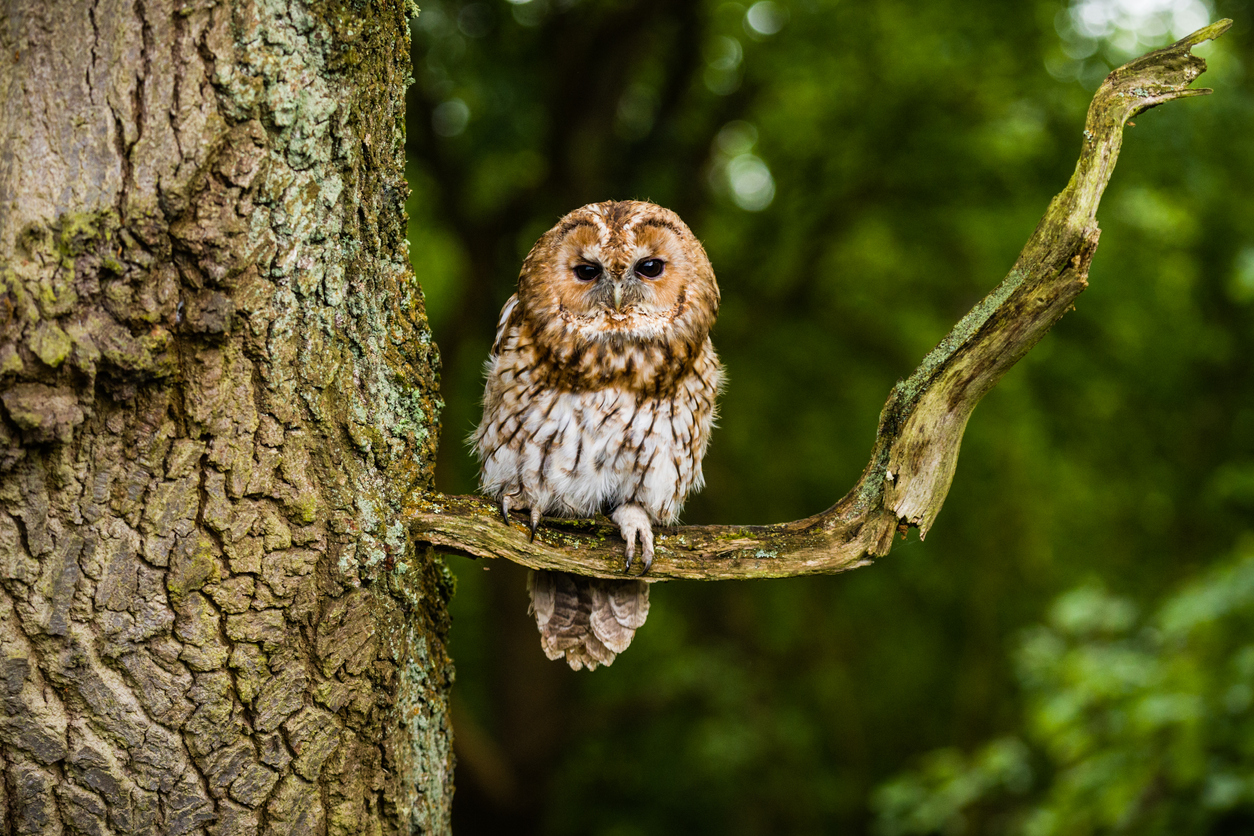We use cookies to make your experience better. To comply with the new e-Privacy directive, we need to ask for your consent to set the cookies. Learn more.
- You are here:
- Home
- Recent Blog Posts
- Wildlife
- Tawny Owl
Tawny Owl

The Tawny Owl is the most common woodland owl in the Britain, but populations are notably absent from Ireland. Adored by many, both male and female Tawny Owls are red-brown or grey-brown in colour, with bark eyes and buff dappled plumage that adeptly camouflages them when they are roosting amongst tree branches.
Although their conservation concern status is currently green, populations haven’t been as widely studied as other species. There is some concern that populations are steadily declining, but the RSPB estimates there are currently around 50,000 breeding pairs in the UK.
Nesting and Breeding Habits
Holes in buildings or trees are Tawny Owls’ favoured nesting spots, but they will also occasionally nest in specialised nesting boxes or a squirrel’s drey. The Tawny Owl breeding season begins in early March, and females will lay between one and seven eggs.
You are much more likely to hear a Tawny Owl calling high up in the trees than you are to see one, making any rare glimpses you do happen to catch even more special.
Diet
They feed predominantly at both dawn and dusk, and small mammals such as mice, voles and shrews make up most of their diet. Tawny Owls will also prey on amphibians, rabbits and small birds.
Hunting Behaviour
Tawny Owls are quick fliers, and their strong and exceptionally efficient wings make them excellent hunters. They will observe their prey from a perch before swooping down at the ideal moment.
General Facts
Latin name: Strix aluco
Length: 37 cm - 39 cm (15”)
Wing span: 94 cm - 105 cm (38” - 40”)
Weight: 330g - 580g (1lb)
Seen: Year round
Conservation concern status: Green
- Nocturnal Moths (1)
- Butterflies (1)
- Bats (1)
- Bees (2)
- Gardening (1)
- Event (1)
- Kestrel (1)
- Mamals (1)
- rodents (2)
- Feeding Birds (2)
- Winter Care (1)
- Beaver (1)
- Pine Martins (1)
- Ltl Acorn (3)
- Trail Cameras (5)
- mammals (1)
- Wildlife Cameras (1)
- Little Owl (1)
- Birds (1)
- Beavers (1)
- Nest Boxes (1)
- Maintenance (2)
- Badgers (1)
- Barn Owl (1)
- Tawny Owl (1)
- Thermal Cameras (1)
- Owls (1)
- Trap Cameras (1)
- Muntjac Deer (1)
- Deer (1)
- Trap Camera Power (1)
- Hedgehog (1)
- Fat Balls (1)
- Bird Feeding (1)
- Ltl Acorn Servicing (1)
- Squirrel Nests (1)
- Drey (1)
- Browning Spec Ops Edge 2020 (1)
- Product Review (2)
- Summer (1)
- Browning Recon Force Edge (1)
- father's day (1)
- gift (1)
- trail camera (1)
- browning (1)
- acorn camera (1)
- garden camera (1)
- wildlife camera (1)
- naturespy (1)
- 6511mg (1)
- cellular camera (1)
- 4g camera (1)
- acorn trail camera (1)
- wireless camera (1)
SIGN-UP TODAY to receive our E-newsletter(s), and stay informed about wildlife news, tips, plus get exclusive content and product discounts.
*You can always unsubscribe!
